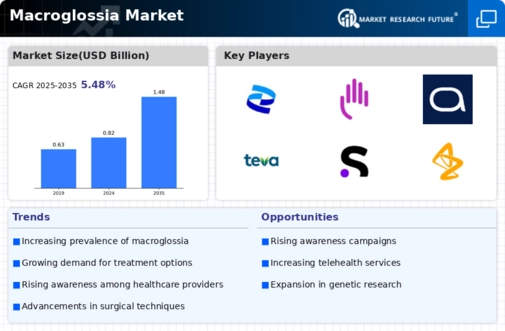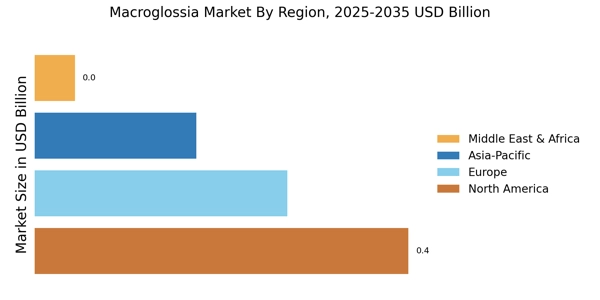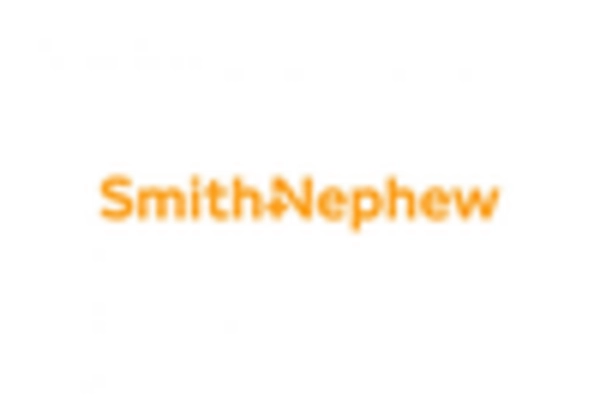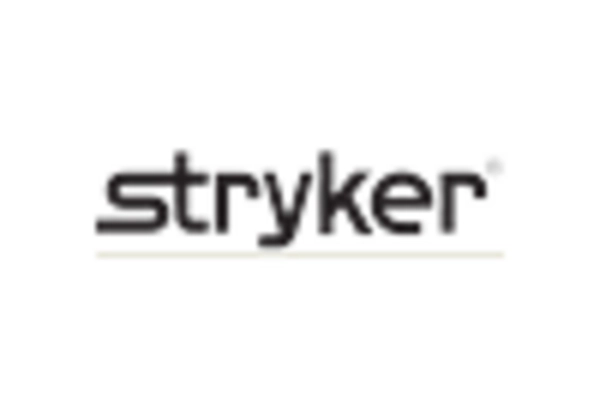Increasing Prevalence of Macroglossia
The rising incidence of macroglossia is a notable driver in the Macroglossia Market. Conditions such as congenital disorders, genetic syndromes, and certain systemic diseases contribute to the growing number of cases. For instance, conditions like Down syndrome and Beckwith-Wiedemann syndrome are associated with macroglossia, leading to an increased demand for medical interventions. As awareness of these conditions expands, healthcare providers are more likely to diagnose and treat macroglossia, thereby propelling market growth. The prevalence of macroglossia is estimated to affect approximately 1 in 10,000 individuals, indicating a substantial patient population that requires specialized care and treatment options. This trend suggests that the Macroglossia Market will continue to expand as healthcare systems adapt to meet the needs of affected individuals.
Technological Innovations in Treatment
Advancements in medical technology are significantly influencing the Macroglossia Market. Innovative surgical techniques, such as minimally invasive procedures, are becoming more prevalent, allowing for effective treatment of macroglossia with reduced recovery times. Additionally, the development of new diagnostic tools enhances the ability to identify macroglossia early, facilitating timely intervention. The introduction of 3D imaging and modeling technologies aids surgeons in planning and executing procedures with greater precision. Furthermore, the integration of telemedicine in follow-up care provides patients with easier access to specialists, thereby improving treatment outcomes. As these technological innovations continue to evolve, they are likely to attract investment and interest in the Macroglossia Market, ultimately benefiting patients and healthcare providers alike.
Rising Awareness and Education Initiatives
The growing awareness of macroglossia among healthcare professionals and the general public is a crucial driver in the Macroglossia Market. Educational initiatives aimed at informing both practitioners and patients about the condition are becoming more prevalent. These initiatives often focus on the symptoms, potential complications, and available treatment options for macroglossia. Increased awareness can lead to earlier diagnosis and intervention, which is essential for improving patient outcomes. Furthermore, advocacy groups are playing a vital role in promoting education and support for individuals affected by macroglossia. As awareness continues to rise, it is anticipated that the Macroglossia Market will experience growth, driven by an informed patient population seeking effective treatment solutions.
Growing Demand for Customized Treatment Plans
The shift towards personalized medicine is becoming increasingly relevant in the Macroglossia Market. Patients are seeking tailored treatment plans that address their specific needs and conditions. This trend is driven by a greater understanding of the diverse causes of macroglossia, which can vary significantly among individuals. Healthcare providers are now focusing on developing individualized approaches that consider the patient's overall health, lifestyle, and preferences. This customization may involve a combination of surgical intervention, speech therapy, and orthodontic care, depending on the severity of the condition. As the demand for personalized care rises, the Macroglossia Market is likely to adapt, leading to the emergence of specialized clinics and treatment programs that cater to this need.
Increased Research and Development Activities
The Macroglossia Market is witnessing a surge in research and development activities aimed at understanding the underlying mechanisms of macroglossia. Academic institutions and pharmaceutical companies are investing in studies that explore genetic factors, potential therapies, and innovative treatment modalities. This increased focus on research is expected to yield new insights that could lead to the development of effective pharmacological treatments or preventive measures. Moreover, collaborations between researchers and healthcare providers are fostering a multidisciplinary approach to tackling macroglossia, which may enhance patient outcomes. As the body of knowledge surrounding macroglossia expands, it is likely to stimulate interest and investment in the Macroglossia Market, ultimately benefiting patients and healthcare systems.


















Leave a Comment